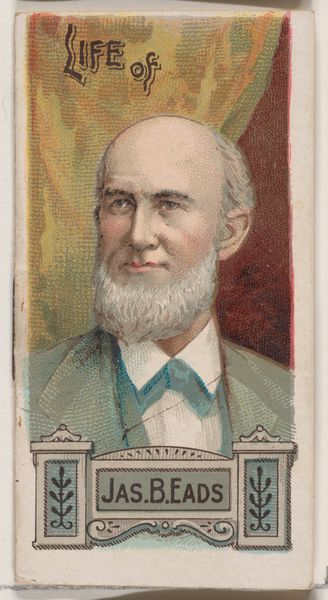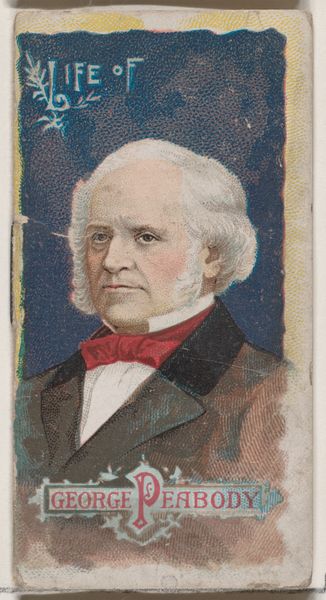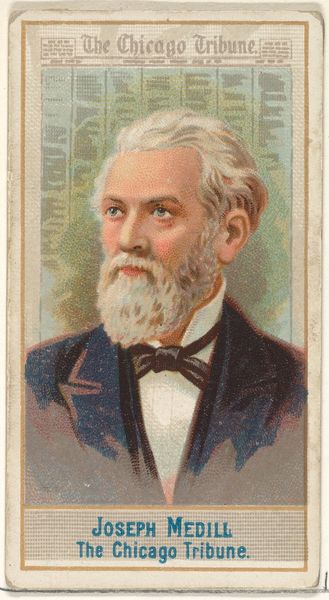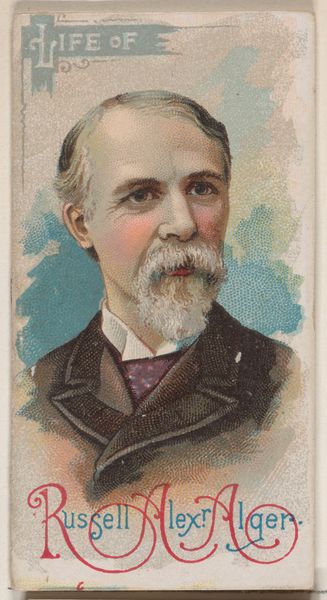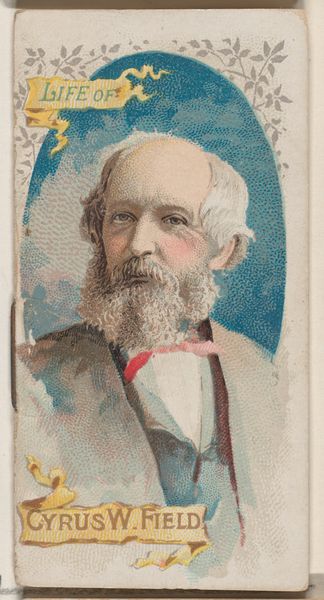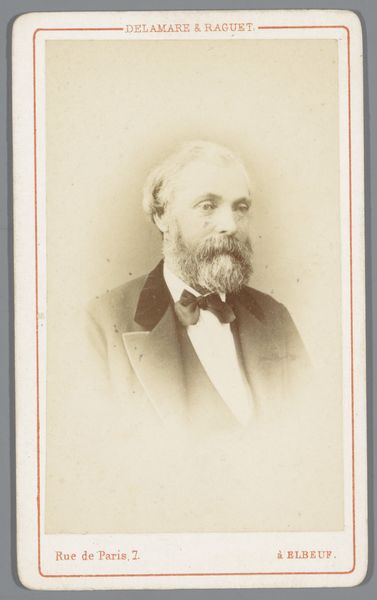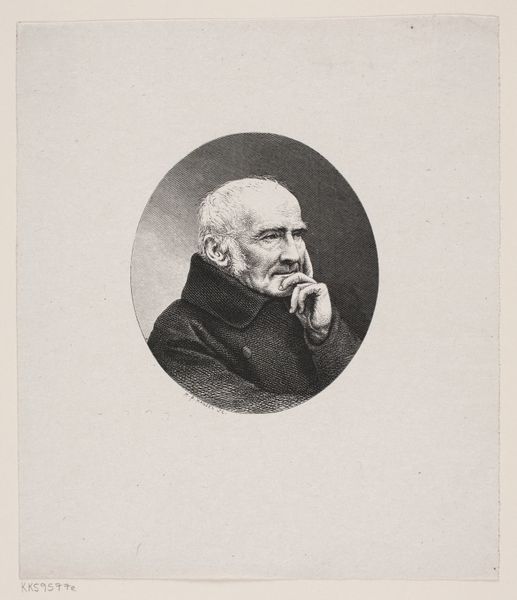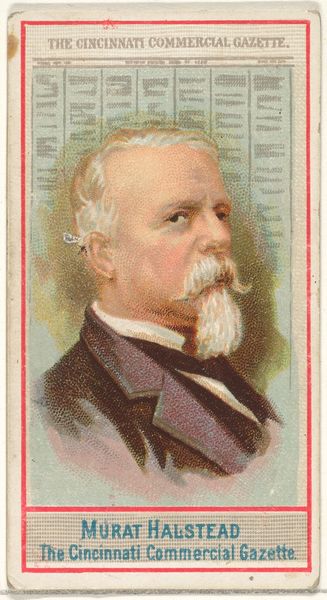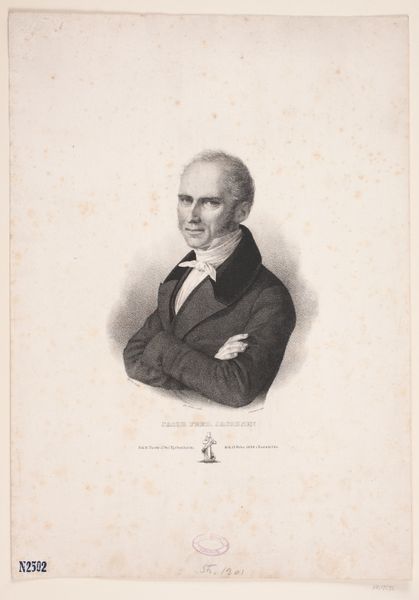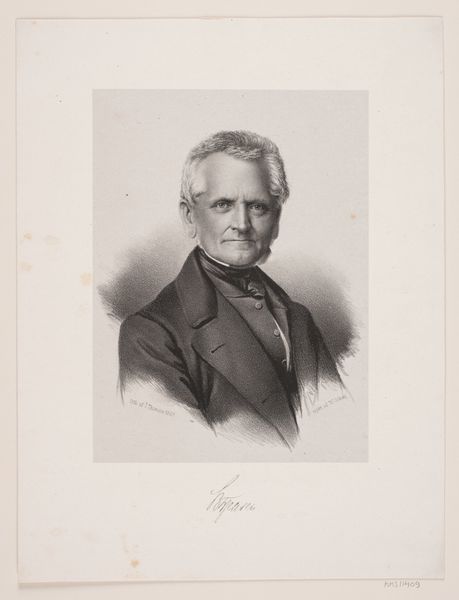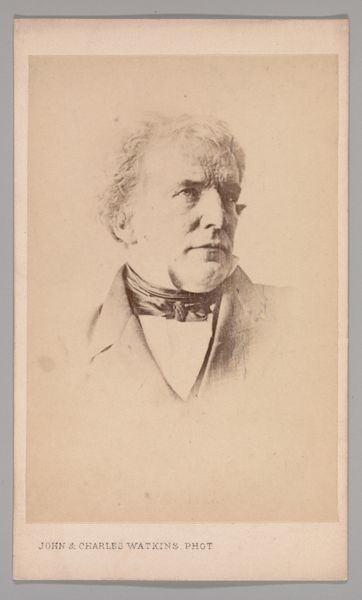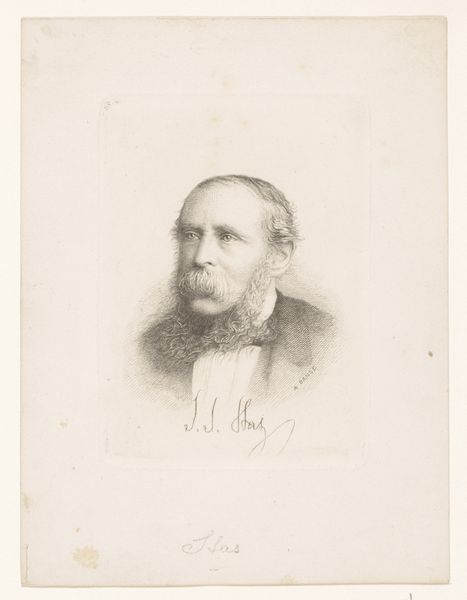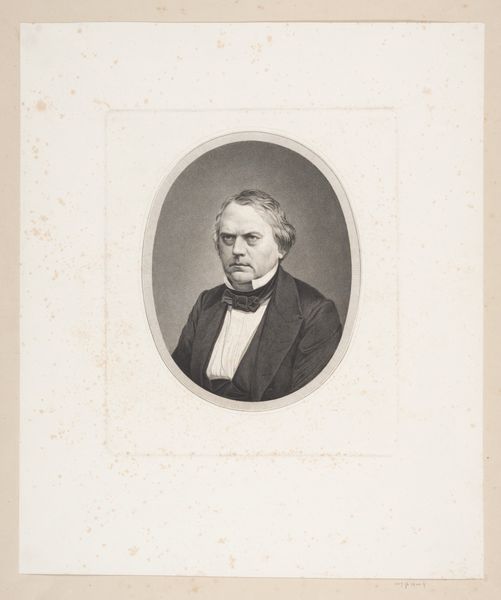
Life of John Greenleaf Whittier, from the Histories of Poor Boys and Famous People series of booklets (N79) for Duke brand cigarettes 1888
0:00
0:00
drawing, coloured-pencil, print
#
portrait
#
drawing
#
coloured-pencil
# print
#
oil painting
#
coloured pencil
Dimensions: Overall (Booklet closed): 2 3/4 × 1 1/2 in. (7 × 3.8 cm) Overall (Booklet open): 2 3/4 × 2 7/8 in. (7 × 7.3 cm)
Copyright: Public Domain
Curator: This intriguing little card is from the “Life of John Greenleaf Whittier, from the Histories of Poor Boys and Famous People series of booklets (N79) for Duke brand cigarettes,” dating back to 1888. Editor: It’s fascinating how the muted colors lend a sense of faded grandeur to what’s essentially a tiny, commercial print. The symmetry, too, is immediately noticeable; it's quite balanced for a portrait intended to be mass-produced and distributed as part of a larger consumable product. Curator: Precisely. We must remember its origins—not as a revered artwork, but as a collectable item accompanying Duke cigarettes. This image speaks to the late 19th-century culture of commodifying success and projecting it through popular icons. The tobacco industry cleverly capitalized on narratives of social mobility to market its goods. Editor: And yet, consider the level of detail, particularly in Whittier's face. The use of color, applied through colored pencils perhaps, and the way the light catches his brow…there’s an intention towards realism that elevates it. Despite its size, the portrait conveys character. Curator: True, but even that realism has a purpose in this context. It adds to the believability of the aspirational message, creating an approachable figure for the everyday consumer to emulate—at least in their aspirations, if not necessarily their smoking habits. It underscores the industrial scale reproduction meant it ended up in myriad locations. Editor: So, is the focus then on the process by which art serves as propaganda, or in looking at design choices in regards to composition that allows propaganda to flourish? Curator: Not propaganda exactly, but popular endorsement! In examining both, we begin to grasp not just the intrinsic form, but the social machinery fueling both the piece's creation and distribution, offering clues to understanding it from both your and my vantage points. Editor: It's this interplay, though, isn't it? Between what it represents outwardly and its physical embodiment of values in its time period? This piece exemplifies how the very format affects its value, but also transcends it! Curator: Absolutely. A product of its time, reflective of its manufacturing process, a portal into understanding consumption of that era and so very tiny! Editor: A tiny moment with grand ambitions. Thank you!
Comments
No comments
Be the first to comment and join the conversation on the ultimate creative platform.
